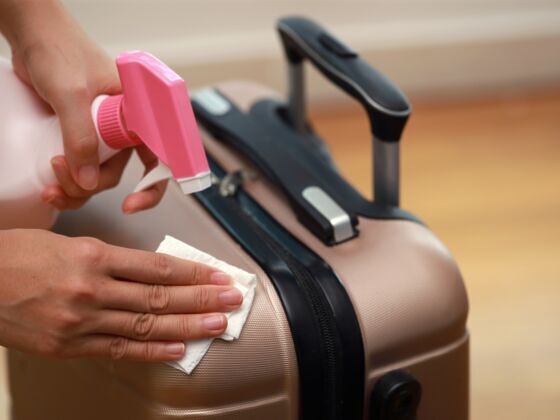This summer, as part of a pilot program, JFK Airport’s Terminal 7 is equipped with Clean, a luggage-disinfecting system that uses UV-C light to “eliminate 99.9 percent of viruses, bacteria, and other harmful pathogens from luggage surfaces in seconds,” a press release explains.
The system is a machine that resembles a TSA luggage scanner. When bags go through Clean via a small conveyor belt, they are blasted with a special kind of ultraviolet light that denatures the DNA of the bacterias and viruses that may be present on their surface, effectively killing them.
